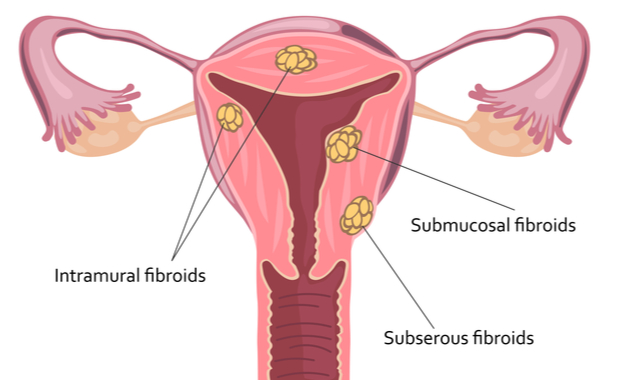Are you looking for an ideal fibroid treatment? Fibroids are uterine tumors in women. In addition to the anemia caused by heavy bleeding, fibroids can cause pelvic pain, a feeling of pressure, dysmenorrhea, decreased quality of life, and infertility. At USA Fibroid Center, we offer minimally invasive uterine fibroid treatment.
Currently, uterine fibroid treatments consist mainly of surgical or radiological interventions, with limited clinical alternatives. In women requesting fertility preservation, fibroid treatment can help remove surgically (myomectomy) by laparotomy, laparoscopy, or hysteroscopy, depending on the size, location, and type of fibroid. However, myomectomy is a procedure without risk and can lead to severe complications. Therefore, it is essential to determine whether such a uterine fibroid treatment can lead to improved fertility and, if so, select the ideal surgical approach.
Why consult for uterine fibroid treatment?
Uterine fibroids are estrogen-dependent tumors that originate from the smooth muscle of the uterus and contain elements of connective and fibrous tissue. They are the most frequent benign tumors of the uterus. They are detected in 20 to 25% of women of reproductive age, with their peak appearance between the fourth and fifth decades of life. Fibroid affects 80% of cases throughout their lives and is 3 to 9 times more common in the black race.
Uterine fibroid causes
The precise causes are unknown, but several predisposing factors exist, such as age, endogenous and exogenous hormonal disorders, obesity, diet, and smoking. About 40% are chromosomally abnormal, with translocations between chromosomes 12 and 14, and 60 remaining % may have undetected mutations. Many of these genes appear to regulate cell growth, differentiation, proliferation, and mitogenesis.
Due to their location in the uterus, they are classified as intramural (within the wall of the uterus), submucosal (protrude into the uterine cavity) and subserous (originate on the surface of the uterus and can be pedunculated).
Regardless of their benign nature, uterine fibroids are responsible for causing significant morbidity. Although most are asymptomatic, about 20% produce menorrhagia, resulting in anemia, pelvic pain, and genitourinary symptoms. Other medical disorders have also been associated, such as infertility, recurrent miscarriage, and preterm labor. Clinical signs play an essential role in the appropriate treatment decision, the size and location of fibroids, the age of the patient, and their chronological proximity to menopause.
With the new techniques in fibroid treatment, molecular abnormalities responsible for these tumors have been identified. Familiarity with the molecular origin of fibroid growth is increasingly important, allowing current therapies to be more targeted.
Uterine fibroid treatment at the USA Fibroid Center
The optimal selection of patients for uterine fibroid treatment, invasive procedures, or surgical intervention at USA Fibroid Centre depends on an accurate assessment of fibroids’ size, number, and position. The imaging techniques available to confirm the diagnosis are ultrasonography, sonohysterography, and magnetic resonance imaging.
Due to the high frequency of regression after menopause, the current approach in women consists of seeking a minimally invasive treatment, such as Uterine Embolization can be prescribed during this transition period and that generates the fewest side effects to avoid surgical treatment.
Uterine Fibroids Embolization (UFE)
Uterine Fibroids Embolization (UFE) is a minimally invasive fibroid treatment with radiological intervention performed by the interventional radiologist, aimed at treating the symptoms associated with uterine fibroids without the need to remove the uterus surgically (hysterectomy). It is also feasible in case of associated or isolated adenomyosis.
The intervention is not very painful, allowing its progress under sedation during a short hospitalization (2 nights). The fibroid arteries are occluded (“embolization”) using calibrated, non-absorbable microparticles. The fibroids are durably de-vascularized, which allows the relief of the symptoms. The uterus remains vascularized. UFE leaves no scar and does not require subsequent resection surgery.
Contact us if you have any questions regarding uterine fibroid treatment. We will gladly assist you. Schedule an appointment online.

